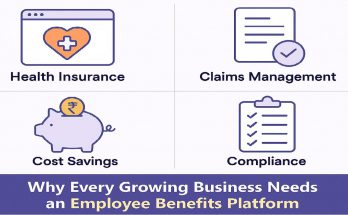Retail in India is changing fast. New-age brands, growing cities, and rising customer expectations are pushing retailers to improve how they work, especially when it comes to speed, accuracy, and cost control. Most efforts are focused on customer-facing areas like stores, apps, and delivery. But many of the real challenges lie in the back office.
Tasks like inventory matching, invoice processing, vendor payments, and sales reporting are still managed manually in many retail businesses. These manual processes slow down work, lead to errors, and affect the overall customer and vendor experience. As retail operations grow, these issues become harder to manage and more expensive to fix. To solve this, many retailers are now adopting Robotic Process Automation (RPA). RPA helps automate routine tasks, reduce delays, and improve accuracy, without needing to change existing systems.
RPA helps retailers complete more work in less time and with fewer errors. As a result, both growing businesses and established retail chains are adopting automation to reduce manual effort and improve consistency in daily operations. In this blog, we examine how retail businesses are improving operational control across inventory, billing, order flow, and vendor processes through RPA-driven automation.
Call now for a Free Retail Automation Audit →
Why Retail Back-Office Operations Fail to Keep Up
While front-end retail technology in India has seen steady advancements, back-office/backend operations still lag behind. These core functions, though less visible, form the operational backbone of any retail business. Yet, in many cases, they continue to depend on fragmented systems, manual processes, and outdated workflows that were never designed to handle today’s scale or speed of retail.
Let’s break down the core challenges in retail back-office functions:
1. Fragmented Systems with No Real-Time Sync
Manual Data Entry
Manual Updates
Manual Sync
2. Inventory and Sales Data Mismatch
Inventory System
Manual Update
Actual Shelf Stock
Delayed Reconciliation
Sales System
3. Vendor and Payment Coordination Gaps
(Spreadsheet/Email)
Manual Handoff
(Offline/Manual)
Email/Spreadsheet
(Email/Offline)
Manual Tracking
(Bank/Manual)
4. High Operational Dependency on Staff
5. Scalability Challenges
Manual Tasks
Manual Tasks
Manual Tasks
Manual Tasks
Manual Tasks
Solution: Automate and integrate workflows for seamless, scalable growth.
Why RPA Has Become a Strategic Need for Retail Businesses
Robotic Process Automation (RPA) is rapidly reshaping how retail businesses handle operational workloads. By using software bots to execute structured, rule-based tasks across digital systems, RPA enhances speed, accuracy, and consistency, without the fatigue or scheduling limits of human workers. As retail supply chains become more complex and customer expectations rise, RPA delivers measurable gains in productivity, accuracy, and cost control.
In the following points, let’s understand the tangible impact of RPA on retail operation:
1. How RPA Automates Key Retail Workflows
Automates order entry, billing, delivery updates
Real-time stock updates, reconciliation, returns
Generates invoices, processes payments
Automated returns, notifications, FAQs
2. Manual vs. RPA-Driven Retail Operations
Manual Process
- Staff enters data in multiple systems
- Prone to delays and mistakes
- Higher operational cost
- Slower turnaround
With RPA
- Bots automate data entry and updates
- Faster, error-free processing
- Lower operational cost
- Real-time execution
3. RPA Integration with Retail Software Ecosystem
4. RPA’s Impact During Peak Retail Demand
High transaction volume
Automate invoices, orders, delivery updates
No bottlenecks, minimal errors
Proven RPA Use Cases for Retail Back-End Processes
RPA is rapidly transforming retail back-office operations by automating repetitive, rule-based tasks across core business functions. Here are the top use cases where automation delivers the greatest impact for retailers.
1. Inventory Management & Automated Stock Replenishment
RPA enables real-time inventory tracking across stores, warehouses, and online channels. Bots monitor stock levels, trigger replenishment orders, and update all systems simultaneously. This reduces manual intervention, prevents stockouts and overstocking, and ensures inventory accuracy for better demand planning and customer satisfaction.
POS/ERP
⇄
WMS
⇄
Shopify/Magento
→
Automated Stock Sync & Replenishment
2. Invoice Processing & Vendor Settlement
RPA streamlines the procure-to-pay cycle by extracting, validating, and matching invoice data with POs and GRNs. Bots flag exceptions and route them for review, while compliant invoices are processed and posted automatically. This accelerates vendor payments, reduces disputes, and ensures compliance with audit trails.
Procurement
⇄
Vendor
→
Data Match & Exception Routing
→
Automated Payment & Audit Trail
3. Order-to-Cash (O2C) Automation
RPA automates the entire O2C process, from order capture and validation to invoicing, dispatch, and payment reconciliation. Bots update each system in real-time, trigger alerts for exceptions, and ensure every transaction is tracked. This results in faster order fulfilment, improved cash flow, and enhanced customer experience.
CRM/Portal
→
Finance
→
Logistics
→
Reconciliation
→
Automated, End-to-End
4. Returns & Refunds Automation
RPA bots validate return requests, check eligibility, trigger refund workflows, and update CRM and inventory systems. Automated exception handling ensures issues are flagged for review, while standard cases are processed instantly. This results in faster refunds, accurate inventory adjustments, and consistent customer communications.
Customer Portal
→
Policy Engine
→
Finance
→
Customer Care
→
Automated & Auditable
5. Loyalty & Promotion Management
RPA automates the validation of coupons, application of discounts, and management of loyalty points across all sales channels. Bots ensure that promotions are applied according to business rules and update loyalty systems in real-time, even during high-volume campaigns. This guarantees consistent customer rewards and reliable campaign analytics.
Promo
POS/eCom
→
Business Rules
→
Order System
→
Loyalty Engine
→
Consistent, Real-Time
6. Sales & Compliance Reporting
RPA consolidates sales, inventory, and compliance data from multiple sources to generate GST-ready reports, stock ledgers, and audit files. Bots ensure all reports are accurate, timely, and formatted for regulatory requirements, reducing manual workload and audit risks for finance and compliance teams.
POS/eCom
+
ERP/WMS
+
GST/Audit
=
Automated, Audit-Ready Output
Why Retailers in India can’t Afford to Delay RPA Adoption
The Indian retail sector is at a critical juncture. Margins are tightening as operational costs rise and consumer expectations for digital convenience and speed continue to escalate. Despite this, many established retailers still depend on outdated, manual workflows that slow down decision-making and expose the business to errors and inefficiencies. In contrast, leading brands in Tier 1 and Tier 2 cities are already embracing Robotic Process Automation (RPA) to streamline back-office operations and gain a decisive edge in a rapidly evolving marketplace.
The following chart illustrates the upward trajectory of RPA adoption in Indian retail:
RPA Adoption in Indian Retail (2022–2026)
2022
22%
2023
34%
2024
47%
2026*
65%+
The role of RPA in Indian retail is expanding, with businesses moving decisively from pilot projects to broad-scale implementation. This shift reinforces the urgency to modernise retail ops and workflows for speed, accuracy, and operational scalability. In this context, retailers who act early can streamline processes, control costs, and deliver more dependable customer service. Failure to act in time, however, may lead to operational inefficiencies and a loss of competitive edge.
Tech Anand Rathi: For Reliable RPA Implementation in Retail
Tech Anand Rathi empowers Indian retailers to automate and optimize operations across every major domain, using deep sector expertise and a library of pre-tested automation modules. Built to handle operational complexity, our RPA offerings drive consistent improvements in cost control, processing speed, and accuracy, benefiting both large retailers and high-growth businesses.
Tech Anand Rathi Driving Tangible Results in Retail with RPA
From initial process assessment to seamless deployment and ongoing optimization, Tech Anand Rathi’s RPA experts partner with you at every stage. We help you identify the highest-impact automation opportunities, select the right tools, and implement solutions that deliver sustainable value, so your business can scale, adapt, and thrive in the new era of Indian retail.
Seize the Competitive Edge with Tech Anand Rathi’s RPA Services
Back-office inefficiencies aren’t just operational, these are strategic liabilities for Indian retailers. As the market evolves, leading brands are recognizing RPA as a powerful lever to simplify complexity, accelerate workflows, and unlock scalable growth. With Tech Anand Rathi, you gain more than just automation. You gain a trusted partner with retail expertise and a proven track record in delivering measurable results through retail automation.
The future of retail belongs to those who act now to modernize their core. Let’s transform your retail stores’ back office operations into a true engine of competitive advantage with custom RPA solutions.




